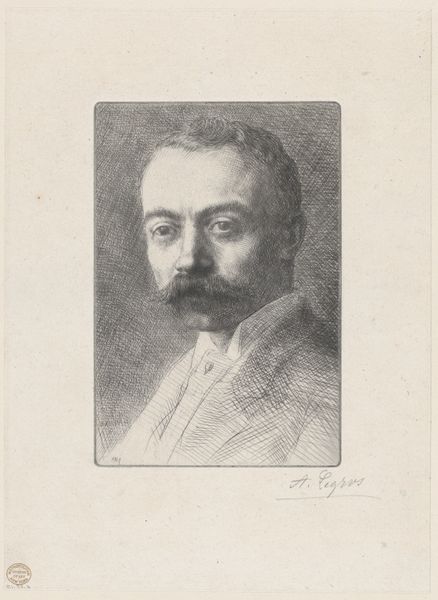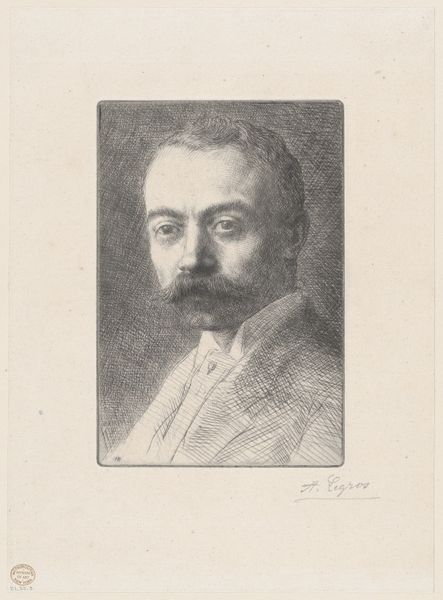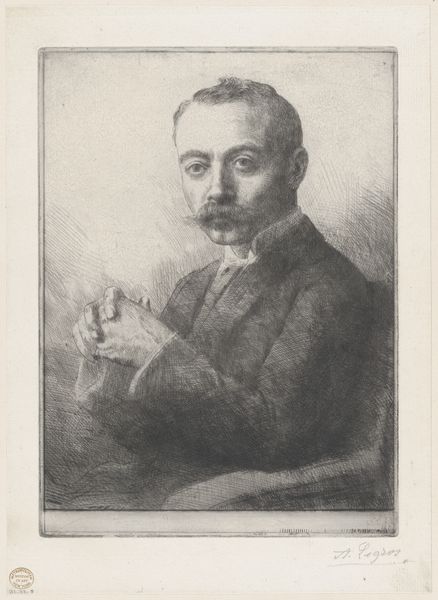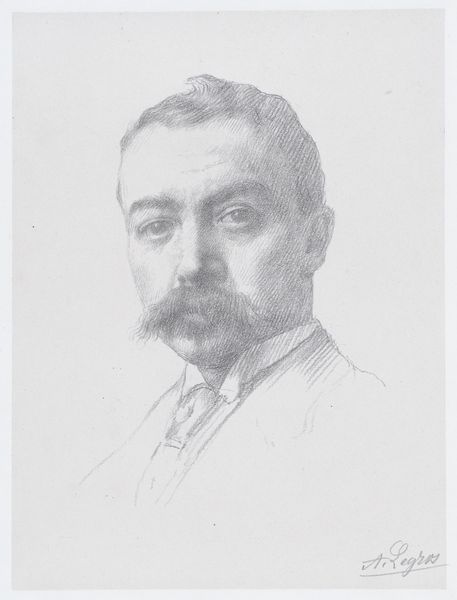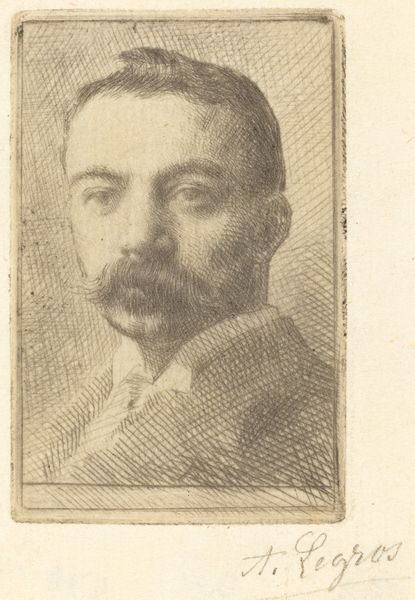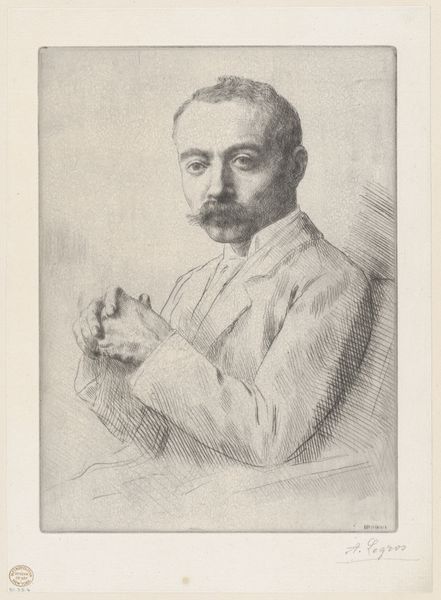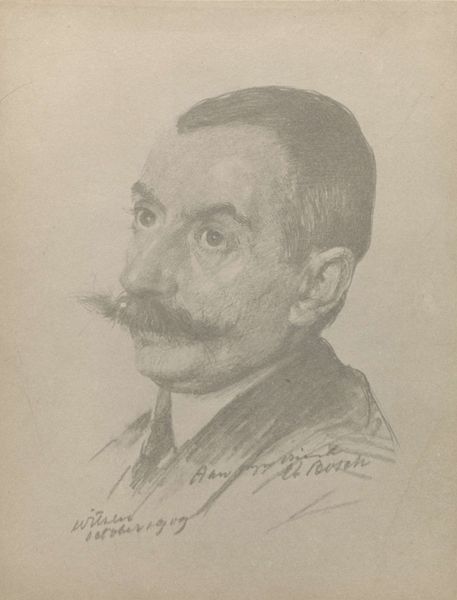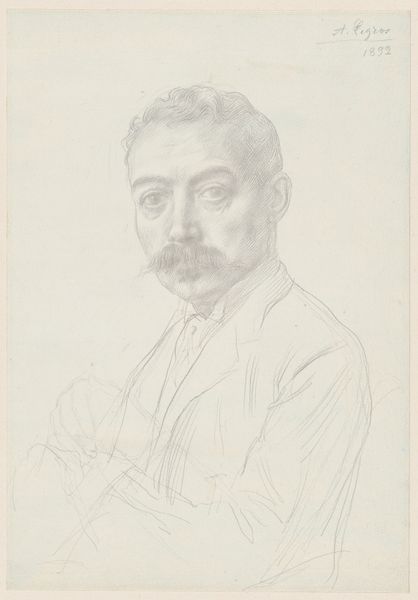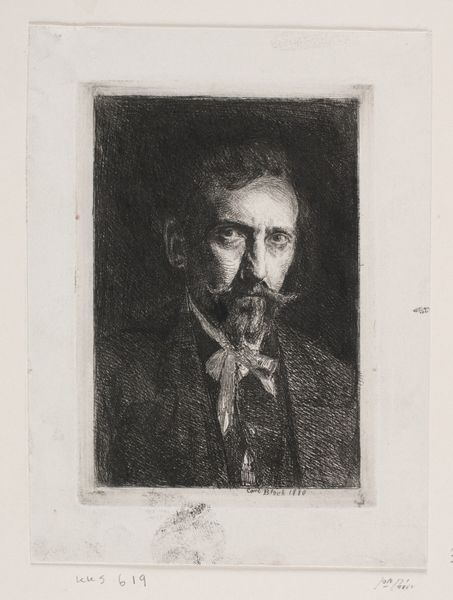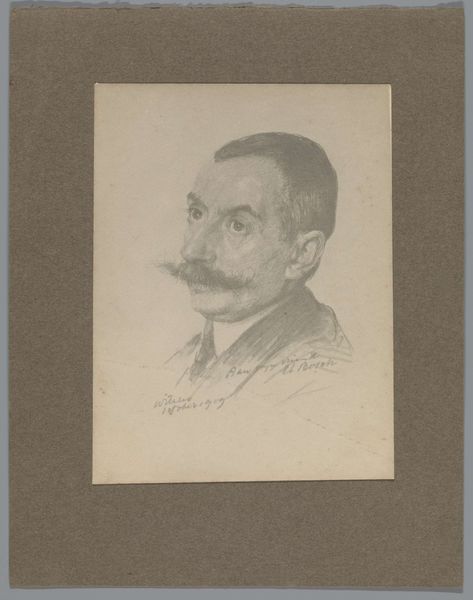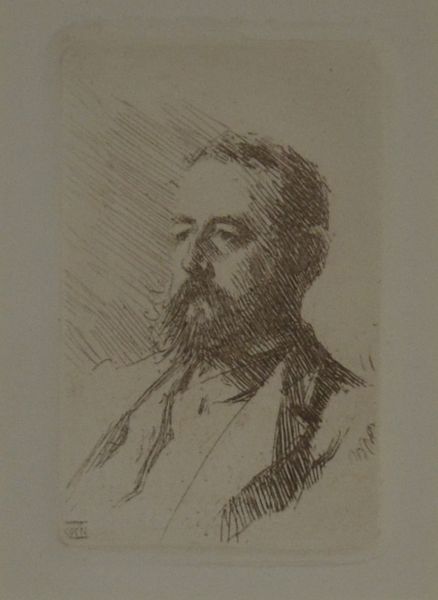
drawing, print, pencil, graphite
#
portrait
#
drawing
# print
#
old engraving style
#
pencil drawing
#
pencil
#
graphite
Dimensions: Sheet: 4 in. × 2 11/16 in. (10.1 × 6.8 cm) Plate: 2 1/2 × 1 5/8 in. (6.3 × 4.1 cm)
Copyright: Public Domain
Curator: This captivating piece is titled "Portrait of Edward D. Adams" crafted in 1892 by Alphonse Legros. It appears to be a print, primarily rendered in graphite and pencil, currently residing here at The Metropolitan Museum of Art. Editor: The intricate cross-hatching gives the portrait such a striking density despite its seemingly small scale. It has an almost ethereal, dreamlike quality. Curator: Indeed. The strategic layering of lines creates volume and depth, inviting us to contemplate the sitter's character. Let’s examine the sharp contrasts achieved with what appear to be meticulously placed graphite markings to better decode Legros’ formal technique. The geometric structures he forms seem intentional. Editor: From a historical point of view, these commissioned portraits served the function of elevating the subjects in status. In Legros's case, Edward D. Adams comes across to me as both shrewd and genteel; traits valued in those days for maintaining class hierarchies. One might argue this rendering serves that exact social function. Curator: Interesting. If one were to disregard its societal implication for a moment, focusing purely on its visual structure, wouldn't you agree the textural play, particularly the contrast between the soft shading around the eyes and the rigorous lines forming his coat, creates a captivating sense of depth and perspective? The picture's geometry guides us toward Adams’ contemplative eyes. Editor: I do concede that Legros was masterful. Considering he made a living doing these kinds of portraits, its formal elements did help him achieve a particular image. The mustache alone contributes to that persona! Curator: Absolutely. A potent formal detail reflecting cultural mores. So much encoded meaning is conveyed in Legros’ lines, wouldn't you say? Editor: Undeniably. These types of commissions really were designed to tell particular stories and support a public image. I appreciate seeing this now through our 21st century lenses. Curator: Well, whether seen as structure or story, it leaves one with a sense of an era gone by.
Comments
No comments
Be the first to comment and join the conversation on the ultimate creative platform.
